The Misunderstandings of Graffiti
To the untrained eye, graffiti can be vandalism of
public or private
property, arbitrary and useless unlike the framed works of arts in
galleries or just lunatics who want to put their names on walls.
Graffiti often times can be a largely misunderstood art form, which to
some people could never even be considered art. Two main questions
conform when considering graffiti, what graffiti can be to a society and
whether or not it should be considered a crime? “Graffiti art
transforms a person’s mood into an image generally on a large surface in
the region of public or private buildings, bridges or overpasses,
recreational facilities and public transportation” ("Writing on the
Wall." Patel, Samir S). Graffiti, which can be done with materials such
as spray paint, crayon and any permanent ink, conforms two general
views. The first involving the general public stating signs of disorder,
meaning graffiti can open the door to individuals breaking other social
norms and rules (Graffiti triggers crime, littering, study shows, pg1).
The second view refers to the graffiti as art, considering the art as
making the city a brighter and more attractive place to live (Graffiti:
Art and Crime, IV).
Different
types of graffiti can cause the misunderstanding throughout
society. The five major types of graffiti include gang graffiti, tagger
graffiti, conventional graffiti, ideological graffiti and oner
graffiti. The first main type of graffiti called, gang graffiti is often
used by gangs to mark turf or convey threats of violence (US department
of justice, pg.3). Then there’s tagger graffiti, generally done rapidly
with the intention of complicating street art and having no intention
of making it look like a piece of art. Conventional graffiti when done,
often isolated or consist of spontaneous acts of "youthful exuberance,"
and even sometimes malicious or vindictive (US department of justice,
pg.3). Ideological graffiti conveys political, gender, race and
religious messages. The last main type of graffiti would be, Oner
graffiti, which uses an in-depth thought process, tremendous amount of
colors, and needs an extreme amount of talent, also done individually
without any affiliation to a crew (Tagging as a social literacy
practice, Pg.358). This generally takes a lot of time because it has the
intention of becoming a masterpiece or to be viewed by the public as a
piece of art.
Graffiti artists, such as a well know artist named Bansky and Pixnit
that do oner graffiti for a way of expressing themselves, the thrill,
street credit, to contribute to a community, honoring one’s death, and
even a way out; for example my uncle had a slight drug problem and was
jobless then as soon as he started writing on public and private walls
his life began to change. He later on got into a prestigious art school
called The Art Institute of California, San Diego. Graffiti allowed my
uncle to get back on the right path and into a position where he is
today, currently doing marketing design for movie titles such as Little
Miss Sunshine and business signs such as my dad’s business,
Environmental Development.
Graffiti artists view their graffiti as an art, such as Banksy who
painted a mural (graffiti) on the Palestinian side of Israel's blank
boring West Bank barrier which separates Israel from the Palestinian
Territories. This mural depicted a man pulling back a curtain to reveal a
beautiful sunny scene on the other side of the blank boring barrier,
and another mural showing a girl being lifted by balloons towards the
top of the wall. Since the barrier’s value was not affected by the paint
and the murals demonstrated a meaning, the graffiti artist would look
at this as a contribution to the society (An Essay Concerning The
Recognition of Some Forms of Graffiti As Art). Other artists do graffiti
for many different reasons other than to make a political statement or
even to have a meaning.

(Odeith. Odeith’s Hall of Fame. 2007. Detroit. Digital image.)
A graffiti artist by the name of Coda does his art for a more
in-depth perception of his true self. Coda comments, "To pour your soul
onto a wall and be able to step back and see your fears, your hopes,
your dreams, your weaknesses, really give you a deeper understanding of
yourself and your own mental state."(Graffiti: Art and Crime, graffiti
and the community). With graffiti being incorporated in Coda’s life, he
has essentially been able to become closer to his family and most of all
found his true self. By Coda finding his true self he not only can
figure out what interests him but also can take steps in his life to
become successful and closer to his dream.
Even though graffiti artists do their own graffiti for different
moral reasons such as Banksy and Coda, they all seemed to feel
frustrated with the way the media portrays them, often times relating
the art to gangsters or even thugs who corrupt the economy. For example
in March 2009, a man identified by Pittsburgh Police as “Hert,” the
city’s second most-wanted graffiti artist, entered the Allegheny County
Courthouse for an appearance stemming from a prior arrest for graffiti.
As soon as he arrived, he was informed that police wanted him arrested
because of 69 misdemeanors and four felony counts of criminal mischief
based on graffiti (art-crime-graffiti-wars). TV cameras were there to
capture the moment that ended up portraying him as a gangster graffiti
artiest, which “Hert” would strongly object to. Another graffiti artist
named Sueme who is also involved with graphic design, photography,
abstract painting and mixed media fine art states that he does his art
for the passion and the way it expresses himself, not for gang related
measures or even corrupting the economy (fatcap, sueme). “Chor-boogie” a
popular graffiti artist in the west who stays away from gang
involvement mentions, “My real goal is to support myself and a family
off what I love to do” and “Honestly I'm not down with it simply because
I have a different perspective on the art side of things… I do it
because I simply like painting” (fatcap, chor-boogie).
Graffiti has urbanized over the years, constantly changing to exceed
the limits that were once never even thought of, such as style, skill
and creativity. A writer named "Noise" from Louisville, said this about
the current position of graffiti, "It's all about being creative,
markers on stop signs and bus stops—that's been done. You need to
elevate and push it to the next level whether you're making stickers and
putting them up or carrying around a bucket full of glue rolling it and
putting up your posters on a wall so they won't come off or even
telephone poles with some kind of art on it. It's all about, like I
said, just elevating and being creative and pushing the
envelope"(Graffiti.org/trucker). This begins to benefit the community by
keeping away useless tags and even gives artist money for making
murals. For example In January 2008, San Diego paid artist Jason Hailey
$4,000 to create the first mural along the Sprinter line (VISTA: Murals
help deter graffiti vandalism).

(Slinkachu. Sloooooow Motiooooon. 2009. Digital image.)
This mural painted along the city's rail line was put into place to
combat graffiti along Vista's Sprinter corridor. Since this mural was
painted, there have been no tags put up on the train lines; therefore it
seems to be working. City officials mentioned they hope to see more
murals along the tracks to help erase the tagging problem (VISTA: Murals
help deter graffiti vandalism). These types of graffiti can be very
beneficial to a community not only because it keeps unnecessary tags
away but can also be inspirational, uplifting and beneficial to the
community by bringing everyone together. This leads the community to
become more involved, providing new exquisite structures and a way for
people in the community to socialize and create new friendships, which a
community needs to become a stable, productive city.
While some people believe graffiti can help a community, others
believe it can ruin the community. Driving down revenues associated with
reduced ridership on transit systems, reduced retail sales, declines in
property value and the removal processes that takes place cost our
government lots of money (graffiti hurts). A 2006 survey of the 88
cities, Caltrans and Metro in Los Angeles County on graffiti removal
found the cost of graffiti removal on walls, transits, ect was about $28
million dollars a year (graffiti hurts). With a population of close to
10 million, the per capita cost comes to around $2.80(graffiti hurts).
According to the US Department of Justice there is an estimated 12
billion dollars spent on clean ups in the US yearly (US department of
justice, pg.1). The cost of graffiti clean ups end up costing the
taxpayers lots of money; therefore before the general public ever
appreciates graffiti, they begin not to like it.
When the general public thinks of graffiti they commonly think of it
as gang related by identifying turf, declaring superiority over other
gangs, or even instigating challenges and threats to rivals which damage
public and private facilities (Graffiti…Art or Vandalism). They tend to
see graffiti in these ways because of the style it consists of,
often-unreadable words or initials, elaborate designs or bubble-style
letters. This leads further to people believing a message of lawlessness
and a neighborhood that does not care about its appearance or
community. Graffiti not only can be considered a means of gang
involvement by the general public, but as a “gateway for other
disorderly problems including public disorder, such as littering, public
urination and loitering; shoplifting of materials needed for graffiti,
such as paint and markers; gangs and gang violence, as gang graffiti
conveys threats and identifies turf boundaries; and property
destruction, such as broken windows or slashed bus or train seats” (US
department of justice, pg.3).

(JiLsBLaOvzE. Chicago Gang Graffiti. 1990. Chicago. Digital image.)
When an economically dysfunctional city has a lack in control and
tends to become careless about its appearance it starts to invite
destructive graffiti. When this destructive graffiti starts to emerge it
then causes the value of property to decrease. For example in San
Antonio graffiti not only drains the communities tax dollars that
provide the funds that could be used for schools, roads, parks and other
community improvements that now have to be used for graffiti clean up
but decrease the property value and leads to a loss in business growth
(sanantonio.gov). This ends up deterring tourist and even decreased
resident’s feeling of safety in a community. Thus instilling fear and a
feeling of vulnerability within the city, putting it into a downward
spiral. In a study called “Graffiti triggers crime, littering, study
shows” they did two experiments with an outcome of learning that
graffiti artists become more motivated to do graffiti when there is an
anti-graffiti sign in the area (Graffiti triggers crime, littering,
study shows). In conclusion these graffiti artists do it without
permission, therefore the general public thinks they should be punished
for a crime.
The general public needs to be informed that graffiti can be
prevented. In a research paper called Problem-Oriented Guides for Police
Series No. 9 it shows that graffiti can be substantially reduced and
sometimes even be eliminated. This can happen with an efficient response
to graffiti. The study shows, in order for this to happen there needs
to be someone tracking the amount or size of graffiti, number and type
of graffiti locations, content and type of graffiti, length of time
graffiti-prone surfaces stay clean and public fear and perceptions about
the amount of graffiti, which (may be assessed through surveys of
citizens, changes in use of public space and transit systems, changes in
retail sales, and other indirect measures) on a routine basis (US
department of justice, pg.28). When a community does not like or
considers graffiti to be destructive they need to take some control
rather than leaving it to the police. Typically the general public
relies soly on police to regulate graffiti, but in order to stop
graffiti in a community it must involve the general public, individual
victims and criminal justice officials such as prosecutors and judges.
According to Martha Cooper graffiti can be considered as vandalism
and at the same time be art, “It can be art and vandalism. Most people
did not know at the time…They just saw graffiti and they just felt
insulted by graffiti and they hated graffiti…”
(urbanartcore) Since
graffiti can be considered as an art form, it should be allowed by the
government if they set the right regulations for it, such as in areas
with cracked walls, deserted buildings and in places where it will set a
good image for the community. If people can benefit from
non-destructive graffiti and there is no loss to anyone but the fact
that they don’t like the way it looks, it should be legal with certain
restrictions. Graffiti can not only benefit an artist but also can
inspire others, making certain areas of a community more enjoyable and
even benefit the economy.
Works Cited
"Banksy." Wikipedia. Wikimedia Foundation, Inc., 29 Oct. 2010. Web. 28 Nov. 2010.
Breiner, John. "Interviews, Articles, and Research." Myartspaceblog. Contemporary Art World, 13 Dec. 2007. Web. 25 Oct. 2010.
Bryner, Jeanna. "Graffiti Triggers Crime, Littering, Study Shows."
Msnbc.msn.com. Microsoft National Broadcasting Company, 20 Nov. 2008.
Web. 12 Nov. 2010.
Cooper, Martha, and Henry Chalfant. "Pro Graffiti: Martha Cooper & Henry Chalfant."
Urbanartcore.eu. Urban Art Core, 2 July 2010. Web. 20 Nov. 2010.
JiLsBLaOvzE. Chicago Gang Graffiti. 1990. Chicago. Digital image.
MacGillivray, Laurie, and Margaret S. Curwen. Tagging as a Social
Literacy Practice. Journal of Adolescent and Adult Literacy, 2007. Web.
20 Oct. 2010.
Mckenzie, Lisa. "The Facts." Sanantonio.gov. Official Website of the City of San Antonio, 2007. Web. 20 Nov. 2010.
Newton, Matthew. "Art Crime: Graffiti Wars." Thecrimereport.org. The
Crime Report/Inside Criminal Justice, 22 Feb. 2010. Web. 15 Nov. 2010.
Odeith. Odeith’s Hall of Fame. 2007. Detroit. Digital image.
Patel, Samir S. "Writing on the Wall." Academic Search Premier. N.p., Aug. 2007. Web. 27 Oct. 2010.
Prosper, Ivy. “Graffiti…Art or Vandalism?” Youtube. Youtube, 8 July 2008. Web. 26 Oct. 2010.
Ross, Cigi. “VISTA: Murals Help Deter Graffiti Vandalism.” NCtimes.com. North County Times, 2 Jan. 2010. Web. 25 Nov. 2010.
Slinkachu. Sloooooow Motiooooon. 2009. Digital image.
Stowers, George C. "An Essay Concerning The Recognition of Some Forms of
Graffiti As Art." Graffiti Art. N.p., Fall 1997. Web. 25 Oct. 2010.
Sueme. "Interview Sueme." FatCap. 21 June 2010. Web. 29 Oct. 2010.
Tucker, Daniel. Graffiti: Art And Crime. N.P., 1999. Web. 24 Nov. 2010.
Weisel, Deborah L. "Graffiti." Popcenter.org. U.S. Department of Justice/Office
of Community Oriented Policing Services, 1 Feb. 2002. Web. 15 Nov. 2010.
Williams, Sherwin. "Get Facts." Graffitihurts.org. Keep America Beautiful, Inc., 2010. Web. 10 Nov. 2010.
Young, Alison, and Mark Halsey. "The Meanings of Graffiti and Municipal
Administration." The Australian and New Zealand Journal of Criminology
35.2 (2002): 165-86. 1997. Web. 20 Nov. 2010.


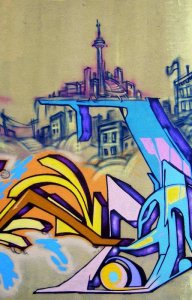
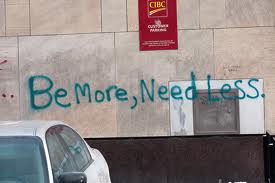
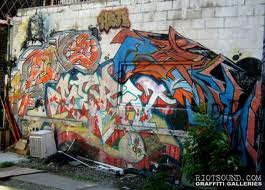
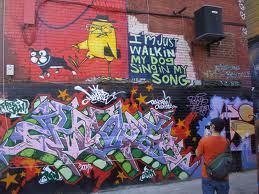
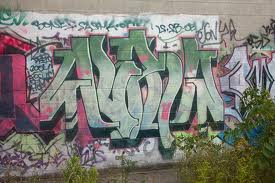
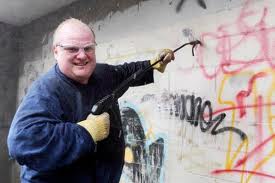
![Graffiti-Moon-by-Cath-Crowley Graffiti Moon by Cath Crowley [Review]](http://www.bartsbookshelf.co.uk/bookshelf/wp-content/uploads/2012/09/Graffiti-Moon-by-Cath-Crowley-275x421.jpg)





